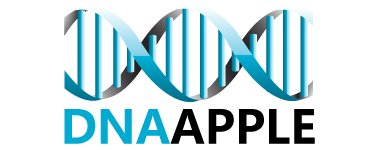Choosing the Right Autosomal DNA Test
Build Your Family Tree Through Ancestry DNA
March 1, 2019What Autosomal Ancestry DNA Testing Can Do For You
March 1, 2019Let a genetic genealogist walk you through the different tests available

Natural Selection is not a random process - neither should your personal selection of autosomal DNA testing (for genealogical purposes) be random. Let a genetic genealogist walk you through the different tests available, so that you will know what they offer and which offer the most cost effective approach for the average genetic genealogist.
Autosomal DNA is highly useful for genealogical purposes. The more autosomal DNA you share with another person, the more closely related you are to that person. In fact, autosomal DNA comprises the majority of our DNA and is found in 44 of our 46 chromosomes. This kind of testing can identify closely-related, as well as distantly-related cousins about whom you may not have previously known.
There are currently three primary genetic genealogy companies that offer autosomal DNA testing for genealogical purposes: 23andMe, Family Tree DNA (FTDNA), and Ancestry.com. The tests offered by these companies are similar in that they all use "SNP chips" that test between 700,000 and 967,000 specific point mutations called SNPs (single nucleotide polymorphisms). 23andMe's test includes the most SNPs in its test.
All three companies provide you with a list of closest matches in their databases. The number of matches that you will have depends on the number of people in the company's database, the number of people with your ancestral background who have been tested, and the criteria that the company sets for what constitutes a match. AncestryDNA has the lowest criteria for a match, which results in more distantly related people showing up on your match list.
23andMe and FTDNA's product ("Family Finder") both provide you with the information about the specific DNA segments that you share with your matches, including which chromosomes the matching segments are located on, the number of SNPs in the matching segment, and the start and stop positions on the chromosomes for each matching segment. This information is crucial for genetic genealogists who are trying to trace their family trees, since the matching segment information allows you to map your chromosomes, which involves determining which ancestor or ancestral couple the matching segments were inherited from. AncestryDNA currently does not provide this information, which is a major disadvantage to this test; however the advantages of the test is that it phases the data before the match list is generated, which reduces the number of false positive matches that appear on your match list.
Each of the companies deal with databases of varying sizes. 23andMe at this time has about 160,000 people in its database, FTDNA has about 40,000 people in its Family Finder database, and Ancestry has about 65,000 in its AncestryDNA database. 23andMe's test offers health-related information as part of the test, which is something that neither FTDNA's Family Finder nor AncestryDNA include. A much higher proportion of the people who have taken 23andMe's test have done relatively limited genealogical research, which makes it more challenging when trying to contact your 23andMe matches. The tests are also offered at varying prices -- from approximately $200 to $300.
I believe that the most cost effective approach for the average genetic genealogist is to get the DNA test first and then import the raw data file into the FTDNA Family Finder database, which currently costs less than $100. This saves about $200 as compared to ordering both tests separately. You have to be an Ancestry member in order to do the AncestryDNA test, and you must receive a personal email from the company inviting you to do the test before you can order it. I believe that it is reasonable for Ancestry.com subscribers to do the AncestryDNA test, but people who do the test need to be aware that there are some significant disadvantages to this test relative to the other tests, since Ancestry doesn't provide the raw data files to its customers and also doesn't provide the matching segment data.

